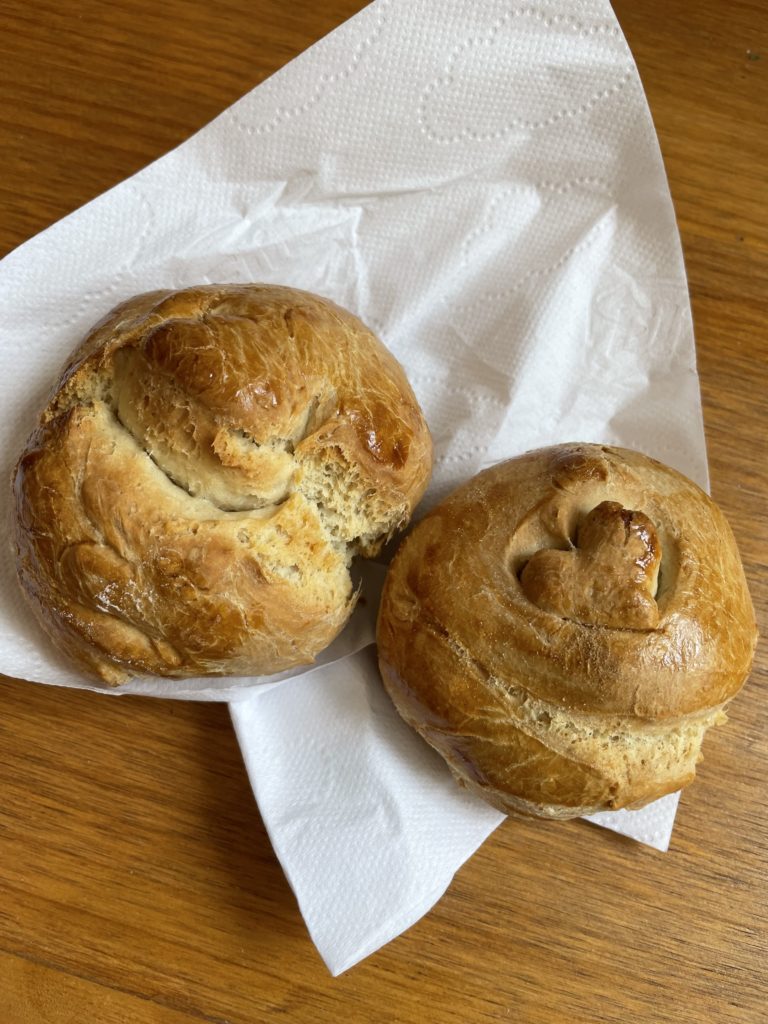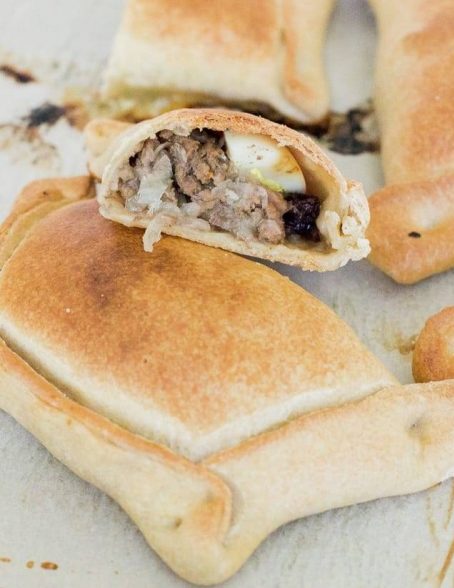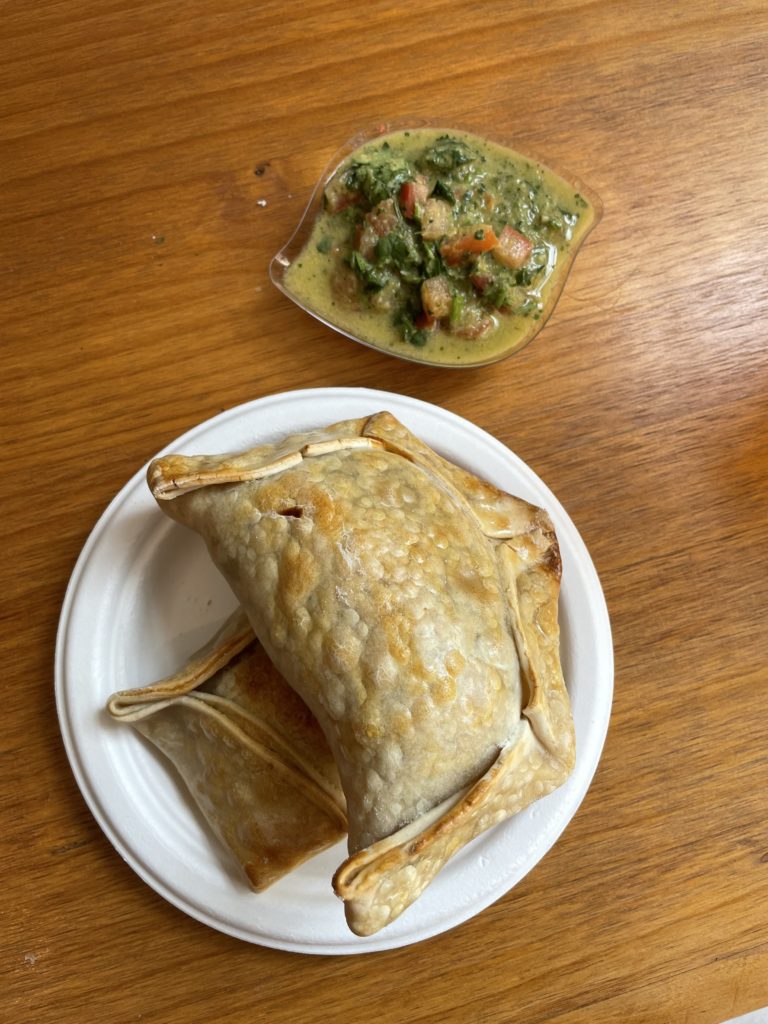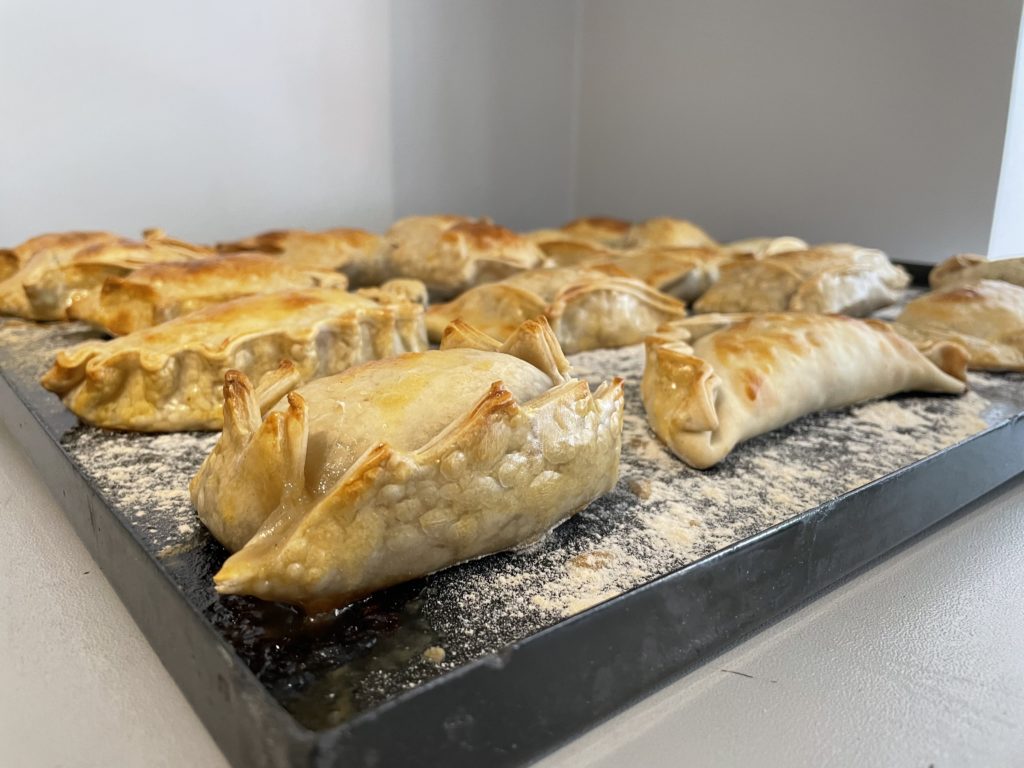On the morning of orientation, I woke up early to the sound of my alarm. Somehow, I managed to crawl out from under my fort of blankets and begin my morning routine. The apartment was quiet as I made my way to the kitchen. I scrambled up some eggs and oatmeal for breakfast and then headed out the door. The night before, my host mother had taken me to the IES center, which was about a 20-minute walk from my apartment complex. But in the morning sun the streets were transformed. Overhead, colorful leaves reminded me of the new school year back home. It was surprisingly quiet but after a few blocks, the buildings grew taller and the streets became crowded.


Eventually, I spotted the navy blue door to the IES center. My excitement spiked. I marched up the front steps and wondered which of my classmates had already arrived. A couple weeks earlier the 11 of us had met over Zoom. Inside the center, I was greeted by my coordinators and instructed to take a rapid COVID test. When the cotton swab hit the back of my nose, I blinked back tears and fought back a sneeze. I wonder if I will ever get used to that sensation.
In the next room, a few of my classmates were waiting for their results. We bonded over traveling horror stories and they all seemed cool. It’s fun to think back to first impressions after getting to know them more. When the fifteen minutes were up, we made our way to the orientation room. To help with our transition to Spanish, the first session was in a bit of Spanglish. However, after introductions and safety protocols, we switched to 100% Spanish. Throughout the week, we enjoyed trips and learned a ton of new information. By the time I returned to my homestay each night, my brain was fried.
The highlight of my week was the “Spanish and Cultural Immersion” class. One of our professors prepared lessons and activities each day to teach us about Chilean history, slang, and culture. For the first class, we learned to navigate through the city. In groups of two or three, we explored the nearby streets with a map and a list of places to find. I felt like a kid again, solving the scavenger hunts my mom and grandparents used to create. Of course, my group was the first to finish. We found a ton of cool restaurants, shopping centers, and a music store. At first, it was a bit nerve-racking but our professor taught us a trick in case we got lost. If La Cordillera (Andes Mountain) is to your right, you are facing north. From there, the Mapocho River runs north to south through Santiago. Although it’s not visible, the Pacific Ocean indicates west on your left. Back home, I learned the same trick using Lake Michigan and I rarely use it. But learning Chiles’s built-in compass made me feel like a real explorer. Anytime my classmates and I catch a glimpse of La Cordillera, it’s a contest to see who can figure out the directions first. I appreciated this activity because I got to observe daily life in Santiago and felt safer in my surroundings. It was also a chance to get to know my classmates. As I mentioned, when I returned to my homestay later that night, I was exhausted. I never realized how much brain power it took to be thinking in two languages. Just like the night before, I had another great night of sleep the minute I crawled into bed.
The next day, I came to class feeling energized and excited to learn a couple popular dances in Chile. I reminded me of when my Lolo and Lola taught me the “Tinkling“, a traditional Filipino dance. I remember the proud smile on my Lola’s face as she plucked the tune on the piano. I remember tripping over the broomsticks we used in place of bamboo and how we laughed until we cried, gasping for air. When I dance “Tinkling” I am honored to represent and connect with my heritage. During my time abroad, I was eager to learn the dances that represent Chile. Before we began, our instructor showed us a few performances. I was mesmerized by the poise and power of each dancer.
For out last event, international chef Gerardo Ramos Aros came to the center to teach a cooking class. I was most excited for this day because cooking is one of my passions and a great way to share one’s culture. To begin, Chef Gerardo shared his recipes for Empanadas de Pino, pebre, and Pan Amasado. Each of these are a staple Chilean dish. The rest of the morning, we spent cooking and learning from Chef Gerardo. In addition to his impressive resume, on which includes cooking for Prince Harry, Chef Gerardo has a diverse work history.
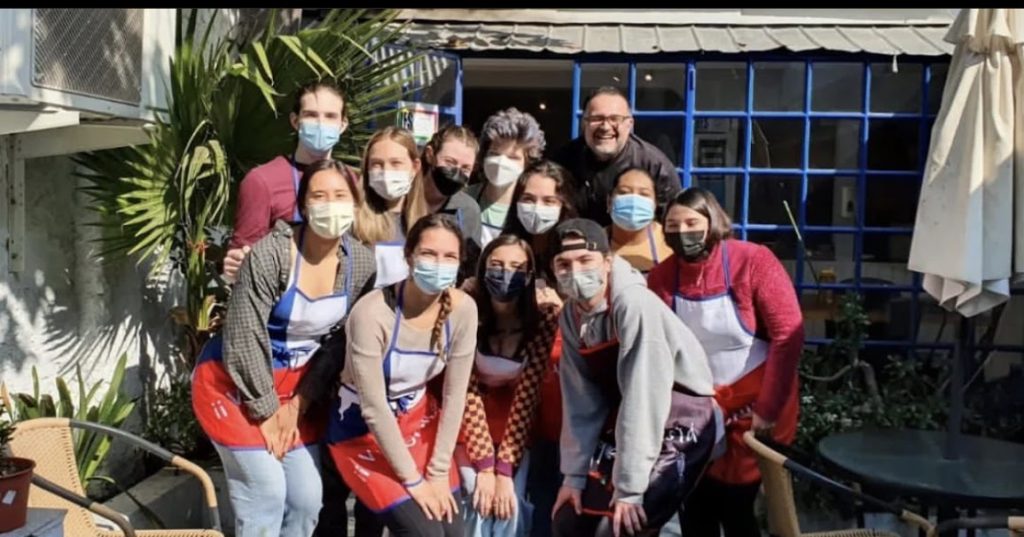
The first dish we learned to make was Empanadas de Pino. In Chile, these are oven baked and filled with a mixture of seasonings, beef and onion. For a bit of extra flavor, some add hard-boiled eggs, raisins, and olives. Before I left, my friends warned me not to chip a tooth on the olive pits. Unfortunately, my classmates didn’t receive the same advice.
The process of making Empanadas is different for everyone and I love the variety of flavors and types in Chile alone. For the sake of time, Chef Gerardo made the dough and filling ahead of time. Our job, in my opinion, was the most challenging part: filling and sealing the Empanadas. I struggled to get the ratio right and I couldn’t help but be amused when my program advisor made three perfect Empanadas in the time it took me to make one. I watched her and took note of her technique. First, when she scooped the filling, she placed it on the lower half of dough rather than in the middle. (This gave her extra room to fold her Empanada into shape for the last step). After wetting the edges with water, she pinched the side closest to her and folded it up. Instead of pressing down with each of her fingers as I had done, she adjusted the position of the filling with cupped hands. Then, using the edge of her pinky fingers she made an arching motion that sealed the Empanada. Carefully, she folded the top down into a roof shape. With some practice, I’m sure I could become a pro like her. But for now, I am satisfied with my first attempt.
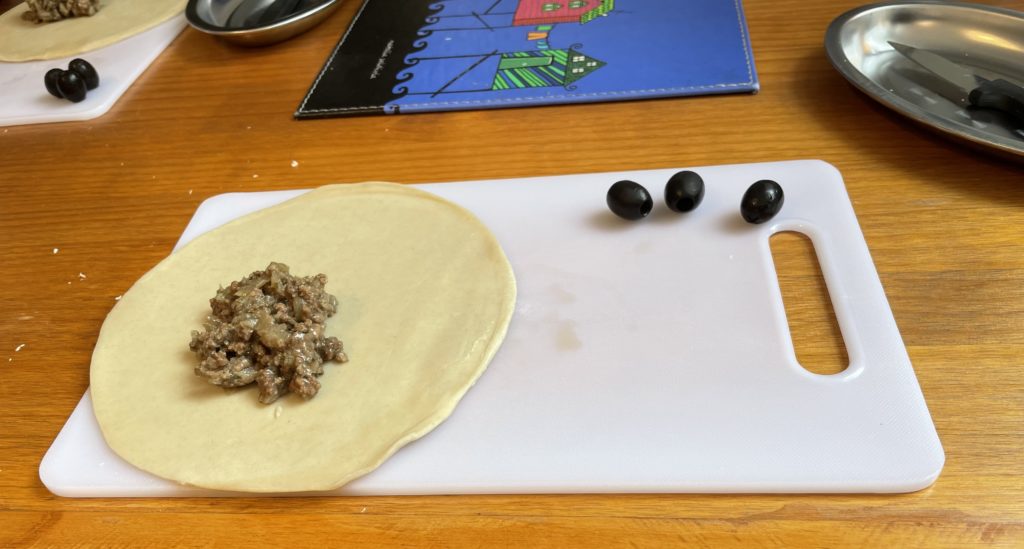
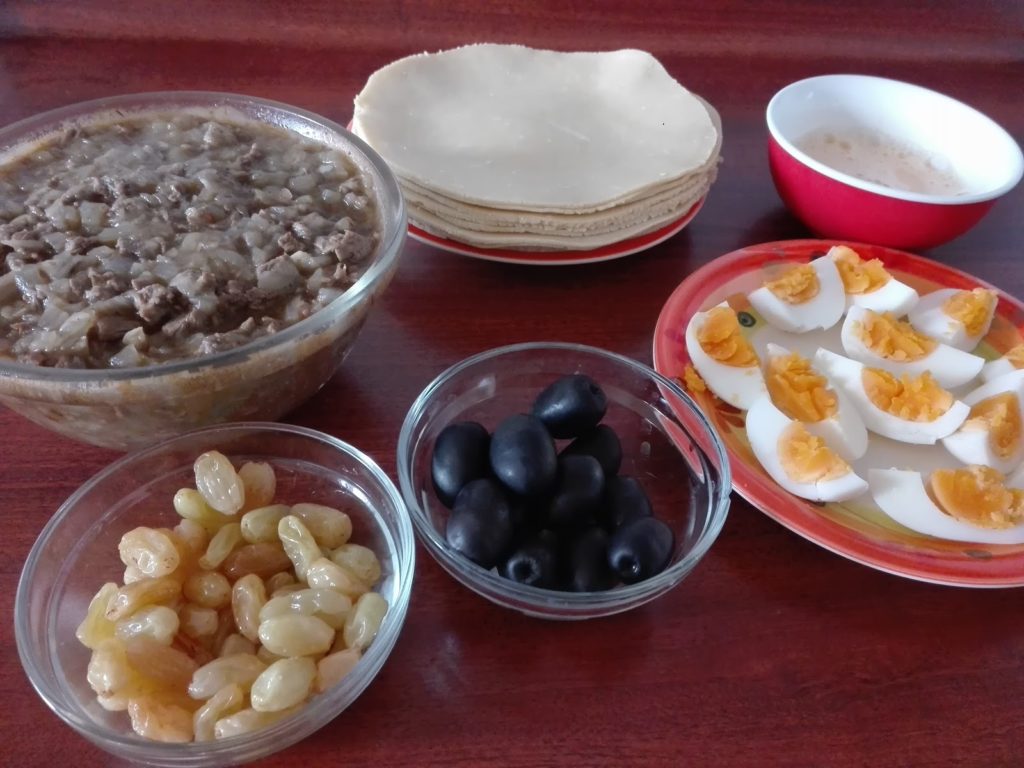

While the empanadas baked in the oven, we prepared our second dish: Pebre. This Chilean salsa is served as an appetizer with bread and occasionally meat. Although there are variations, it is typically made from chopped-up parsley or coriander, aji peppers, tomatoes, onion, garlic, and oil. The flavors mix well and it is hard to resist when there’s a warm loaf of bread in front of you.
Speaking of bread, Chile consistently ranks the highest in bread consumption in Latin America. It is an essential part of the Chilean diet. As a country Chile consumes around 86 and 95 kilograms a year! Almost every stores has a “hay pan” sign welcoming customers in. The most popular kinds are Marraqueta, Hallulla and Amasado. My favorite, Marraqueta, is distinct by its four sections that make up a bigger loaf. The best time to buy a loaf is when its been freshly prepared, usually early in the morning at a local store. The warm rolls have a crunchy outside yet the inside is still warm and fluffy.


This was my first time making homemade rolls and considering the importance of bread in Chile, I feel honored. Chef Gerardo explained the time-consuming process of making Pan Amasada, but in the kitchen, we made a variation of sough dough. The most interesting part was learning about the mother dough or Masa Madre which is used for fermentation. When everthing was finllay cooked and we sat down to eat, my mouth was watering uncontrollably. The smells were amazing but the flavors were even better. Even though it was a great meal, I think I enjoyed the process of cooking and learning about the food more. In just my first week in Santiago I have learned so much. In the coming weeks I look forward to beginning my classes, taking trips and getting to know my classmates.

